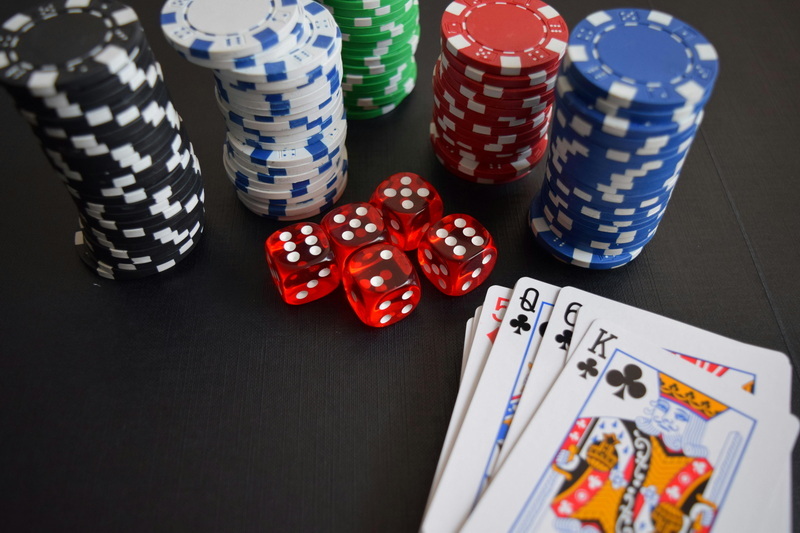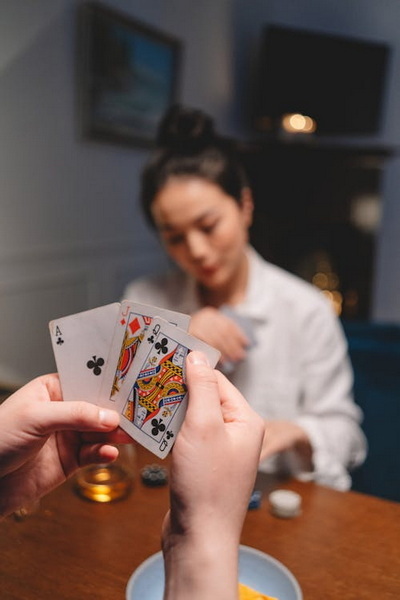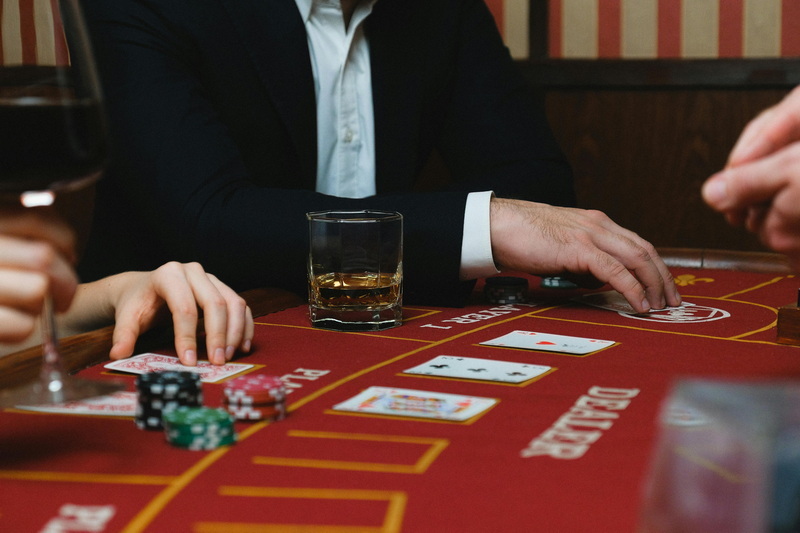Content Menu
● Introduction
● Overview of BS
>> Objective
● Game Setup
>> Materials Needed
>> Player Arrangement
● Gameplay Mechanics
>> Starting the Game
>> Playing Cards
>> Calling BS
>> Endgame Conditions
● Strategies for Winning
● Variations of BS
● Social Dynamics of Playing BS
>> Building Relationships Through Gameplay
● Conclusion
● Frequently Asked Questions (FAQs)
>> 1. How many cards do each player start with in BS?
>> 2. Can I call "BS" after my turn?
>> 3. What happens if two players call "BS" at the same time?
>> 4. Can I challenge multiple cards in one turn?
>> 5. Is there a recommended number of players for BS?
● Citations:
Introduction
The card game BS, also known as Bullshit, Bluff, or I Doubt It, is a popular bluffing game that can be played with three or more players. The game's objective is straightforward: be the first to get rid of all your cards while avoiding being caught in a lie. This article will delve into the rules, strategies, and nuances of playing BS with three players, ensuring that you have a comprehensive understanding of the game.

Overview of BS
BS is a game that thrives on deception and strategy. Players must balance between playing honestly and bluffing to outsmart their opponents. The game can accommodate 3 to 10 players, but it is particularly engaging with three to six players. A standard 52-card deck is used for games with up to six players; for larger groups, two decks are recommended.
Objective
The primary goal of BS is to be the first player to discard all your cards. Players must do this by either playing cards that match the required rank or bluffing about the cards they are placing down.
Game Setup
Materials Needed
- 1 Standard 52-card deck (for 3-6 players)
- 2 Standard 52-card decks (for more than 6 players)
Player Arrangement
1. Choose a Dealer: Randomly select one player to be the dealer.
2. Deal Cards: The dealer distributes all cards evenly among the players. Depending on the number of players, some may receive one extra card.
3. Hold Cards: Players should keep their cards hidden from others.
Gameplay Mechanics
Starting the Game
- The player holding the Ace of Spades starts the game by placing it face down in the center and declaring "one ace."
- Play proceeds clockwise around the table.
Playing Cards
1. Sequential Play: Players must play cards in ascending order starting from Aces, then 2s, and so forth up to Kings. After Kings, the sequence returns to Aces.
2. Declaring Cards: When it is your turn, you must place one or more cards face down and declare how many cards you are playing and their rank. For example, if you play two 3s, you would say “two threes.”
3. Bluffing: If you do not have the required rank in your hand, you can still play any card(s) and claim they are of that rank.
Calling BS
- Any player can call "BS" if they believe another player is lying about their declared cards.
- The accused player must then reveal their played cards:
- If they were lying, they pick up all cards in the discard pile.
- If they were truthful, the accuser must pick up all cards in the discard pile.
Endgame Conditions
The game continues until one player successfully discards all their cards. The remaining players can continue to determine second place and so on.

Strategies for Winning
1. Observe Opponents: Pay close attention to how many cards your opponents play and their previous declarations. Noticing patterns can give you clues about when someone might be bluffing.
2. Know When to Bluff: Bluff strategically; if you have a good chance of being believed, it can help you get rid of unwanted cards. However, over-bluffing can lead to being caught more frequently.
3. Timing Your Calls: Only call "BS" when you are relatively confident that a player is lying; otherwise, you risk accumulating more cards. The timing of your challenge can significantly impact your standing in the game.
4. Psychological Play: Use psychological tactics by varying your behavior when bluffing versus when you're honest. For instance, if you tend to look away when lying, practice maintaining eye contact during honest plays.
5. Card Counting: While not always feasible in casual play, keeping track of which cards have been played can give you an edge in knowing what might still be in opponents' hands.
6. Adapt Your Strategy: Each game will have its unique dynamics based on player personalities and styles. Be adaptable; if one strategy isn't working against a particular opponent, switch it up!
Variations of BS
While the basic rules are engaging, several variations can enhance gameplay:
- Peanut Butter Rule: If a player successfully bluffs without being caught, they may say “peanut butter” to signal they got away with it. This adds an extra layer of fun and encourages risk-taking.
- Reverse Play: Instead of ascending order, players could play in descending order (Kings down to Aces). This variation changes the dynamics significantly and requires new strategies.
- Multiple Decks for Larger Groups: Using two decks allows for more complex interactions and increases the number of potential bluffs.
- Wild Cards: Introduce wild cards that can represent any rank during gameplay. This adds unpredictability and excitement as players navigate through their hands.
- Team Play: In larger groups, consider forming teams where teammates can communicate secretly about their hands while still adhering to standard BS rules.
Social Dynamics of Playing BS
BS is not just about winning; it's also about social interaction and building camaraderie among players. The game's nature encourages laughter and playful deception, making it an excellent choice for parties or casual gatherings.
Building Relationships Through Gameplay
Playing BS can strengthen friendships as players engage in light-hearted banter and strategic deception. Here are some ways it fosters relationships:
1. Shared Laughter: The humorous aspect of calling out someone's bluff or getting caught adds a layer of enjoyment that brings people together.
2. Understanding Personalities: As players bluff and call each other out, they reveal aspects of their personalities—some might be more aggressive bluffs while others prefer honesty until necessary.
3. Creating Memories: Each game session creates memorable moments that players will recount in future gatherings—whether it's an epic bluff or a hilarious miscall.
4. Encouraging Communication: Players often engage in discussions about strategy or past games, fostering deeper connections through shared experiences.
5. Inclusivity: BS is easy to learn and accessible for people of all ages and backgrounds, making it an ideal choice for mixed groups where not everyone may know each other well.
Conclusion
Playing BS with three players offers an exciting blend of strategy and deception that keeps everyone engaged. By understanding the rules and employing effective strategies, players can enhance their chances of winning while enjoying this classic card game. Whether you're playing casually with friends or diving deep into competitive gameplay, BS provides endless entertainment through its unique blend of bluffing and social interaction.

Frequently Asked Questions (FAQs)
1. How many cards do each player start with in BS?
Each player typically starts with an equal number of cards from a standard deck; with three players using one deck, each would receive approximately 17 cards.
2. Can I call "BS" after my turn?
No, you must call "BS" before the next player takes their turn.
3. What happens if two players call "BS" at the same time?
In such cases, players usually vote on who they believe called out first.
4. Can I challenge multiple cards in one turn?
No, you can only challenge the most recent play made by one player.
5. Is there a recommended number of players for BS?
While BS can be played with as few as two people, it is best enjoyed with three to six players for optimal gameplay dynamics.
Citations:
[1] https://www.instructables.com/How-to-play-BSA-game-of-bluffing/
[2] https://www.youtube.com/watch?v=swdzd9sgJk4
[3] https://github.com/kirileec/kirileec.github.io/blob/master/index.json
[4] https://the-game-farm.com/card-games/bs/
[5] https://www.youtube.com/watch?v=fAaRpgAsokA
[6] https://www.cnblogs.com/apachecn/p/18520568
[7] https://www.howtoplaystuff.com/how-to-play-bs/
[8] https://amypessolano.com/how-to-play-bullshit/
[9] https://playwithrules.com/bs-card-game-rules-how-to-play-bullshit/
































